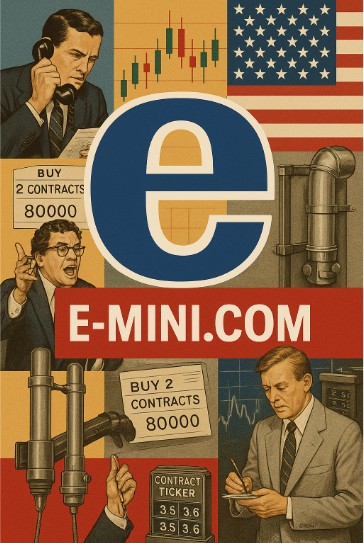Crude oil, often referred to as “black gold,” is one of the most dynamic commodities in the world. Trading crude oil futures is a way for traders, investors, and industry stakeholders to manage the risk associated with its price volatility. Understanding the mechanisms of trading crude oil futures, including contract sizes, trading techniques, and hedging strategies, is crucial for anyone involved in the energy sector.
Crude Oil Futures Contract Sizes
Before diving into trading strategies, it is essential to understand the basics of crude oil futures contract sizes. The most commonly traded crude oil futures are the West Texas Intermediate (WTI) and Brent Crude. On the New York Mercantile Exchange (NYMEX), a standard WTI crude oil futures contract (CL) consists of 1,000 barrels of oil. Prices are quoted in dollars per barrel. The contracts are available for trading in the electronic markets almost 24 hours a day, and physical delivery of these contracts happens in Cushing, Oklahoma, which is a key geographical location for U.S. oil infrastructure.
Brent Crude futures, traded on the ICE (Intercontinental Exchange), also consist of 1,000 barrels per contract and are similarly priced in dollars per barrel. However, Brent is a major international benchmark for crude oil and is sourced from the North Sea.
Techniques for Trading Crude Oil Futures
- Technical Analysis: Many traders use technical analysis to trade crude oil futures. This involves studying chart patterns, volume, and price movements to predict future movements. For instance, traders might use candlestick patterns to identify reversal points in the market, or moving averages to determine the trend direction. In the past, traders relied heavily on daily and weekly charts, but today’s traders often use intraday timeframes to make quicker, more frequent trades.
- Fundamental Analysis: This method involves analyzing macroeconomic indicators, supply and demand dynamics, geopolitical events, and other external factors that could affect the price of oil. For example, a conflict in an oil-producing region could lead to fears of supply disruptions, driving prices up. Conversely, an increase in oil production or an economic downturn might push prices down.
- Spread Trading: This involves buying and selling two different but related futures contracts simultaneously. A common spread in the oil market is the calendar spread, where a trader might buy a contract in one month and sell a contract in a further-out month, betting on changes in the price differential over time. This strategy can be less risky than outright futures positions as it often has lower margin requirements.
- Algorithmic Trading: In recent years, algorithmic trading has become increasingly popular. These systems use complex mathematical models to make high-speed trading decisions. Algorithms may be programmed to follow trends, execute arbitrage opportunities, or react to news-based events much faster than human traders.
Hedging Techniques for Users and Producers
Hedging is a critical aspect of trading crude oil futures, particularly for those involved in the production and consumption of oil. The goal of hedging is to manage risk by reducing the potential negative impact of price fluctuations.
- Producers: Oil producers, such as exploration companies or oil wells, can hedge against the risk of falling oil prices by taking a short position in crude oil futures. For example, if a producer expects to produce 1 million barrels of oil over the next year, they could sell futures contracts equivalent to this amount. If the market price falls, the gain on the futures contracts would offset the loss on the physical oil sales.
- Consumers: On the other hand, major consumers of oil such as airlines and shipping companies can hedge against the risk of rising oil prices by taking a long position in oil futures. This strategy was notably used by airline companies in the early 2000s, allowing them to lock in lower fuel prices even as market prices later surged.
- Options on Crude Oil Futures: Both producers and consumers can also use options to hedge against price volatility. Options give the holder the right, but not the obligation, to buy (call) or sell (put) a futures contract at a specified price before a certain date. This can provide insurance against adverse price movements while allowing participation in favorable movements.
Trading crude oil futures is a complex but potentially rewarding activity that requires a deep understanding of market dynamics and risk management strategies. Whether through direct trading of futures contracts using technical and fundamental analysis, employing spread trading techniques, or utilizing algorithmic solutions, traders have a diverse set of tools at their disposal. Additionally, hedging techniques using futures and options are essential for those who produce or consume large quantities of oil, providing a cushion against unpredictable price movements. As global economic conditions evolve and new technologies emerge, the strategies for trading and hedging in the crude oil futures market will continue to advance, offering new opportunities and challenges for market participants.
Ready to start trading futures? Call US 1(800)454-9572 – Int’l (310)859-9572 email info@e-mini.com and speak to one of our experienced, Series-3 licensed futures brokers and start your futures trading journey with E-Mini.com today.
Disclaimer – Trading Futures, Options on Futures, and retail off-exchange foreign currency transactions involves substantial risk of loss and is not suitable for all investors. Past performance is not indicative of future results. You should carefully consider whether trading is suitable for you in light of your circumstances, knowledge, and financial resources. You may lose all or more of your initial investment. Opinions, market data, and recommendations are subject to change at any time.
Important: Trading commodity futures and options involves a substantial risk of loss. The recommendations contained in this writing are of opinion only and do not guarantee any profits. This writing is for educational purposes. Past performances are not necessarily indicative of future results.
**This article has been generated with the help of AI Technology. It has been modified from the original draft for accuracy and compliance.
***@cannontrading on all socials.




